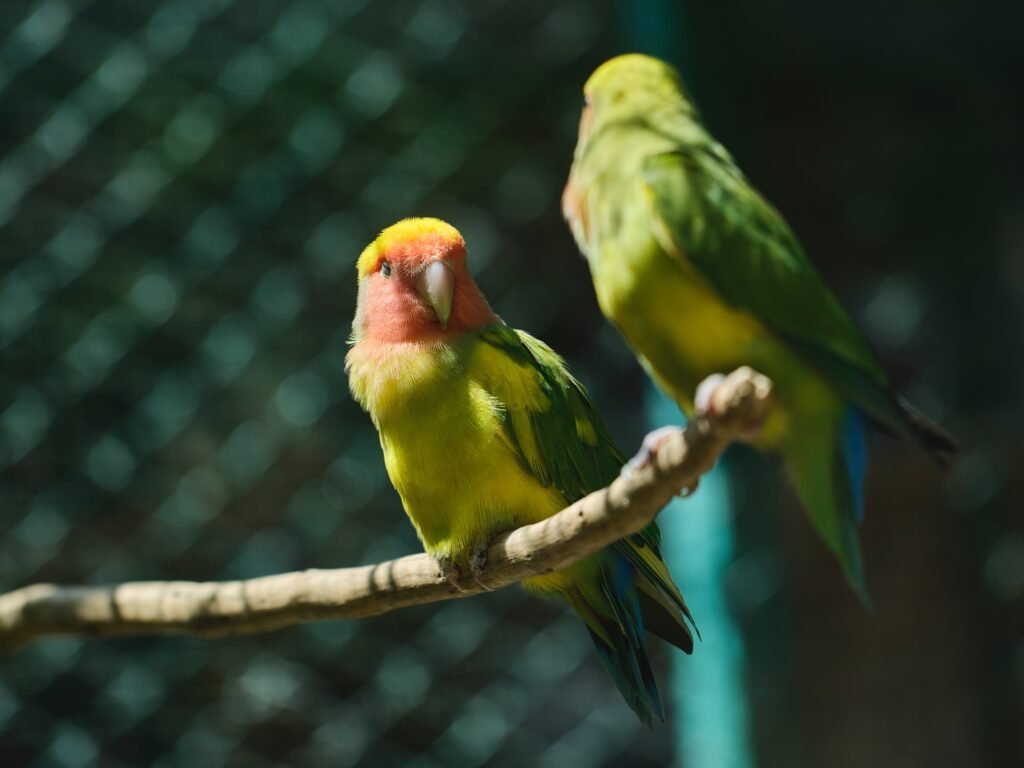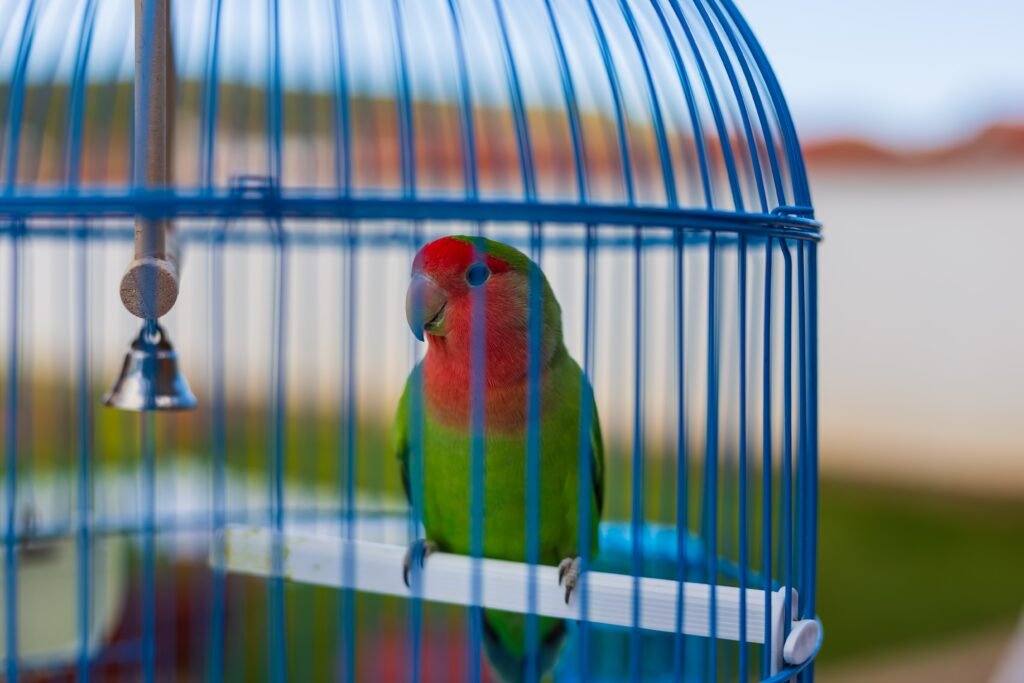Lovebirds, with their vibrant colors and charming personalities, are popular pets among bird enthusiasts. These small parrots are native to Africa and are known for their strong bond with their mate, hence their name. If you’re considering getting a lovebird, it’s crucial to understand the temperature conditions that they can tolerate to provide them with a comfortable and healthy environment. In this article, we will explore the suitable temperature range for lovebirds and provide you with helpful guidelines to ensure their well-being.
Understanding Lovebirds’ Natural Habitat
Lovebirds originate from various regions in Africa, including Madagascar and the nearby islands. In their natural habitat, they thrive in warm climates with temperatures ranging from 70 to 80 degrees Fahrenheit (21 to 27 degrees Celsius). They have adapted to these conditions over generations, making it essential to mimic their preferred temperature range as closely as possible in captivity.
Lovebirds are highly adaptable birds that have evolved to survive in specific climatic conditions. They have developed physiological and behavioral mechanisms to cope with the temperature range in their natural habitat. By understanding their natural habitat, we can provide them with an environment that closely resembles their preferred temperature range, enabling them to thrive.
Ideal Temperature Range for Lovebirds
To keep your lovebirds happy and healthy, it’s crucial to maintain a suitable temperature range within their enclosure. The ideal temperature range for lovebirds typically falls between 70 and 80 degrees Fahrenheit (21 to 27 degrees Celsius). This temperature range ensures that they remain comfortable and don’t experience any temperature-related stress.
Lovebirds are highly sensitive to temperature changes, so it’s important to provide them with a stable and consistent environment. Fluctuations in temperature can cause stress and even lead to health issues. By keeping the temperature within the recommended range, you can ensure that your lovebirds feel secure and content in their surroundings.
Temperature Extremes to Avoid
While lovebirds can tolerate a range of temperatures, it’s important to avoid exposing them to extreme heat or cold. Lovebirds are sensitive to temperature fluctuations, and sudden changes can negatively impact their health. Here are some extremes you should avoid:
- Extreme Heat: Temperatures above 90 degrees Fahrenheit (32 degrees Celsius) can be dangerous for lovebirds. High temperatures can cause heat stress, dehydration, and even heatstroke. It’s crucial to ensure that their enclosure is adequately ventilated and that they are kept away from direct sunlight or sources of heat.
- Extreme Cold: Lovebirds are also sensitive to cold temperatures below 60 degrees Fahrenheit (15 degrees Celsius). Cold drafts can lead to respiratory issues and other health problems. Avoid placing their cage near windows, doors, or air conditioning units that may result in cold air exposure.
By being mindful of these temperature extremes, you can protect your lovebirds from potential health risks and ensure their overall well-being.
Maintaining the Optimal Temperature
To maintain the proper temperature range for your lovebirds, consider the following tips:
- Temperature Monitoring: Use a reliable thermometer to regularly monitor the temperature inside the enclosure. This will help you ensure that the temperature remains within the suitable range for your lovebirds. By keeping a close eye on the temperature, you can make any necessary adjustments promptly.
- Heating and Cooling: If the room temperature drops below the recommended range, use a thermostatically controlled heater to provide warmth. On the other hand, if the room temperature rises above the desired range, you can use fans or air conditioners to bring it back down. It’s essential to have the necessary heating or cooling mechanisms in place to maintain a stable environment for your lovebirds.
- Draft Protection: Protect your lovebirds from cold drafts by placing their cage away from windows, doors, and areas with direct airflow. Drafts can lead to a sudden drop in temperature, which can be harmful to your lovebirds’ health. Ensure that their cage is in a location where the temperature is relatively stable, minimizing the risk of exposure to cold drafts.
- Seasonal Adjustments: During colder months or in regions with extreme climates, you may need to provide additional heating in the form of ceramic heat lamps or heated perches to maintain a suitable temperature for your lovebirds. It’s important to adjust their living environment according to the changing seasons to ensure their comfort.
- Observation and Behavior: Always observe your lovebirds’ behavior and physical signs. If they appear lethargic, fluff up their feathers frequently, or show any signs of distress, it may indicate that the temperature is not suitable for them. By being attentive to their behavior, you can identify any temperature-related issues and take the necessary steps to rectify them.
Conclusion
Providing the right temperature for lovebirds is crucial for their health and well-being. By understanding their natural habitat and preferred temperature range, you can create a comfortable environment for your feathered friends. Remember to monitor the temperature regularly, avoid extremes, and make necessary adjustments to ensure they are happy and thriving. With proper temperature management, your lovebirds will flourish and bring joy to your household for years to come.
FAQ
Q: What is the ideal temperature range for lovebirds?
A: The ideal temperature range for lovebirds is between 70 and 80 degrees Fahrenheit (21 to 27 degrees Celsius).
Q: What temperature extremes should I avoid for lovebirds?
A: Lovebirds should be protected from extreme heat above 90 degrees Fahrenheit (32 degrees Celsius) and extreme cold below 60 degrees Fahrenheit (15 degrees Celsius).
Q: How can I maintain the optimal temperature for lovebirds?
A: To maintain the optimal temperature for lovebirds, you can regularly monitor the temperature inside their enclosure, use heating or cooling mechanisms as needed, protect them from cold drafts, make seasonal adjustments, and observe their behavior for any signs of distress.
Q: Why is maintaining the right temperature important for lovebirds?
A: Maintaining the right temperature is important for lovebirds because they are sensitive to temperature changes, and extremes can cause stress and health issues. By providing a stable and suitable temperature range, you can ensure their well-being and happiness.


